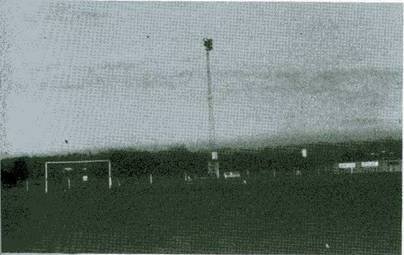
WATTON MEMORIAL PLAYING FIELDThe Primary object of the Playing Fields was to perpetuate the names of those who gave their lives in the Second World War; The Secondary object was to provide playing fields to be named the "Wat- ton Memorial Playing Fields" lo cater for all classes of outdoor sport. Originally nine acres of land were to be purchased that had been zoned as Playing Fields by the Planning Authorities. In July 1947 a house to house collection was arranged and the towns-people asked to subscribe generously, as the estimated cost of buying and equipping the site was £ 3,000, a very large sum in those days. But these were times of austerity with food still in short supply following five years of war. Many snags were therefore encountered before the land was finally released by the agricultural committee and with prices rising steeply all the time it appeared at one stage that the project would be a very long while before it materialised. A committee was formed in the late 1950's, headed by Frank Dye, Sen., and first a site of six acres was purchased, levelled, drained and seeded and with the help of much voluntary work the first part of the sports field was eventually opened in 1961. It consisted of a full size football pitch; cricket square and outfield, hard-based practice nets, a hockey pitch; two tennis courts and a children's play area. Before matches could be played, changing facilities had to be erected and the football club purchased an "Arcon" hut for £ 450 which was erected, fitted out with changing rooms and decorated throughout and a further £ 200 was spent on baths and showers etc. The view from the sports field across the valley to Ovington and Saham Toney, with its Church in the background, is one of breathtaking beauty on a fine summer evening, but during the winter the football supporters soon realised that the north wind sweeping across the open space chilled the spine and soon a party of volunteers were working like beavers in erecting a stand on the north side of the pitch. After a few years Mr. Dick Durrant and Mr. Dudley Bowes generously provided another acre or so and a further nine acres was purchased by the town council. This enabled the hockey pitch to be re-sited, two junior football pitches to be laid out, a full size E.B.A. Bowling Green to be created and a large extension added to the car park. During the summer of 1984 Floodlights were erected at each corner of the football pitch, thus giving many more supporters the opportunity to watch football, who otherwise, due to their working hours, would never have the chance of seeing the team play. In March this year, lan Botham, one of the world's greatest cricketers, who also plays football for Scunthorpe United in the Football League, brought along an All Star XI to play Watton to raise some money towards the £ 22,000 needed to pay for the lights, The game was arranged by Bob Dates, who took over as manager of the Sports Centre when Tom Pettitt retired after nearly ten years dedicated service. Bob was a team mate of lan's at Scunthorpe. On Tuesday, 30th April 1985, the largest crowd to watch a match on this ground saw Watton ex- cell themselves to beat a Norwich City team 1 -0 that included five of the side who had recently won the Milk Cup at Wembley. During the evening Mick Channon, the English International officially opened the Floodlights.
|

